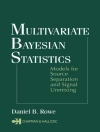In this new century mankind faces ever more challenging environmental and publichealthproblems, suchaspollution, invasionbyexoticspecies, theem- gence of new diseases or the emergence of diseases into new regions (West Nile virus, SARS, Anthrax, etc.), andtheresurgenceofexistingdiseases(in?uenza, malaria, TB, HIV/AIDS, etc.). Mathematical models have been successfully used to study many biological, epidemiological and medical problems, and nonlinear and complex dynamics have been observed in all of those contexts. Mathematical studies have helped us not only to better understand these problems but also to ?nd solutions in some cases, such as the prediction and control of SARS outbreaks, understanding HIV infection, and the investi- tion of antibiotic-resistant infections in hospitals. Structuredpopulationmodelsdistinguishindividualsfromoneanother- cording to characteristics such as age, size, location, status, and movement, to determine the birth, growth and death rates, interaction with each other and with environment, infectivity, etc. The goal of structured population models is to understand how these characteristics a?ect the dynamics of these models and thus the outcomes and consequences of the biological and epidemiolo- cal processes. There is a very large and growing body of literature on these topics. This book deals with the recent and important advances in the study of structured population models in biology and epidemiology. There are six chapters in this book, written by leading researchers in these areas.
Pierre Magal & Shigui Ruan
Structured Population Models in Biology and Epidemiology [PDF ebook]
Structured Population Models in Biology and Epidemiology [PDF ebook]
¡Compre este libro electrónico y obtenga 1 más GRATIS!
Idioma Inglés ● Formato PDF ● ISBN 9783540782735 ● Editor Pierre Magal & Shigui Ruan ● Editorial Springer Berlin Heidelberg ● Publicado 2008 ● Descargable 6 veces ● Divisa EUR ● ID 6320523 ● Protección de copia Adobe DRM
Requiere lector de ebook con capacidad DRM












